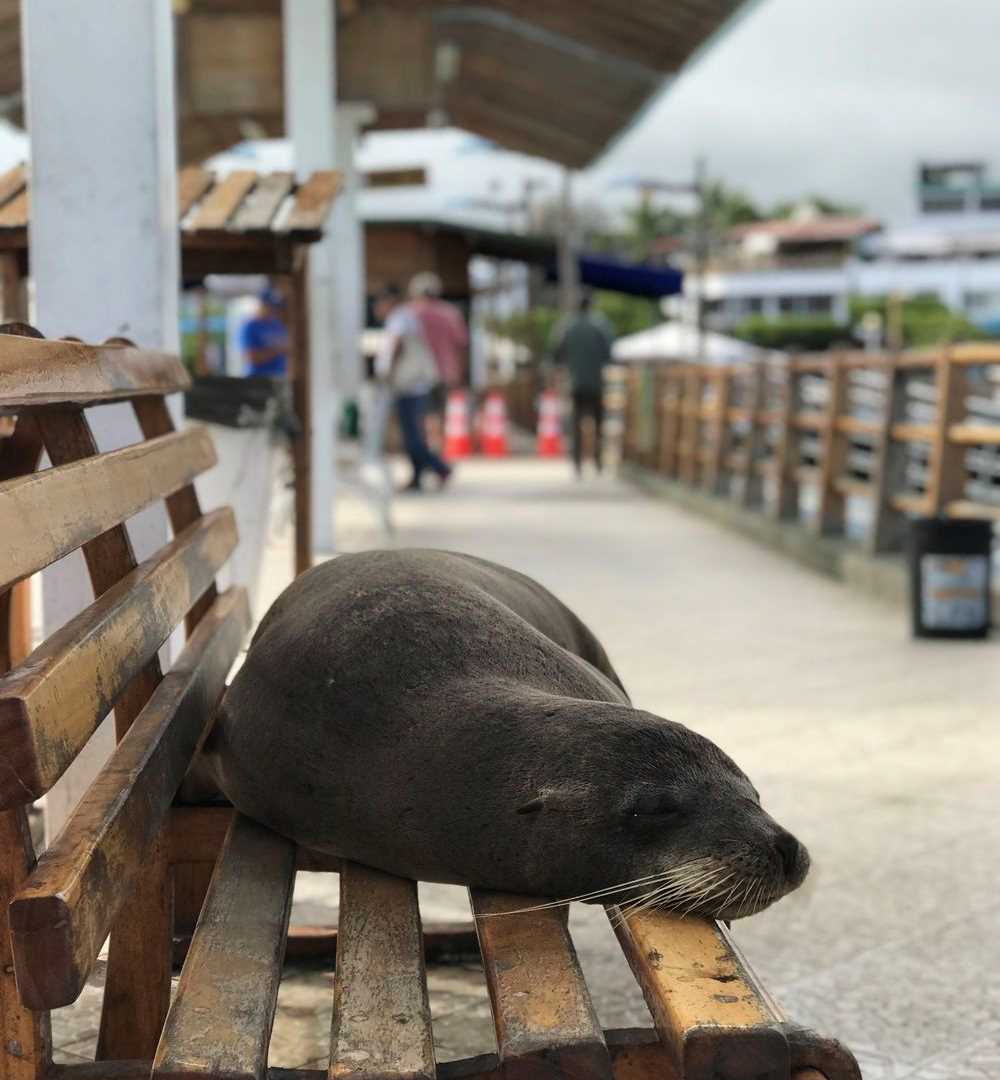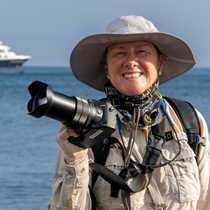A very different day awaited us here at the island of Santa Cruz, known as Indefatigable in English (after the H.M.S Indefatigable British warship from the 1860s). For the first time during our expedition, we found people, cars, trucks, and buildings! However, it is an important stop all the same, for human beings have played an integral role in the history of the Galapagos Islands, both for bad and for good. Conservation efforts have brought species back from the brink of extinction due to tremendous hard work by individuals and organizations over the last few decades.
This is our best opportunity to see the world-renown Galapagos giant tortoises. Not only the endemic species in the wild (unique to the island of Santa Cruz) but individuals from other islands, of different species, of different carapace shapes, whose eggs are raised in incubators. These precious young are given much TLC in protected enclosures, until they can be released back into their native habitat at the correct size to avoid predation. Predation comes in more than one form here, including natural predators like the hawk and snake, as well as introduced predators like the cat, rat and dog (with additional competition for resources in goat form).
So, the morning was spent learning all about the captive rearing program for giant tortoises, run by the Galapagos National Park with assistance from scientists from diverse organizations including the Charles Darwin Research Station. Free time in town for shopping? Done. People watching while walking the main road? Done. Open-mouthed gaping at the fish market while sea lions act as clean-up units at the hips of the fishmongers? Done.
The highlands gave us yet another, very different, perspective on the Galapagos Islands. Up in altitude, greener the landscape. Farms on both sides of the road. At one modest family-run farm we saw the various products that can be extracted from sugar cane, the cacao tree and coffee. At another, after lunch, we saw free-roaming giant tortoises. They come and go, to and from the tortoise reserve that borders the farms. This is an enormous swath of land dedicated to giving them the room to wander, mate and lay eggs in the right season. But often the tortoises prefer to follow the food supply into the higher lands, that today are mostly farms. So the local land owners have adapted, and let them roam in their fields. They allow us visitors to roam around as well, which is precisely what we did. There were enough giant tortoises spread out in the fields for each of us to choose our personal tortoise and have a conversation with it, if we liked (and a few did, I am sure).
Back on board by nightfall, several of the local gifted artisans came on board to show us how they create their art, and after dinner we had one last fabulous presentation from the locals - music and dance in the lounge!







